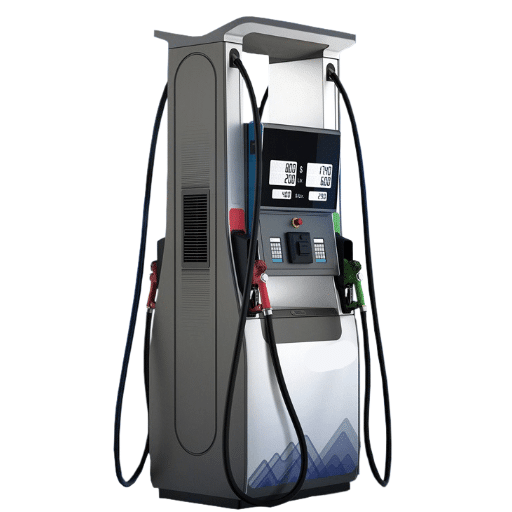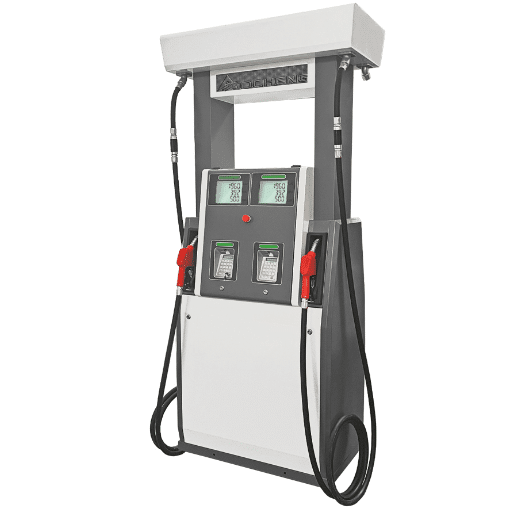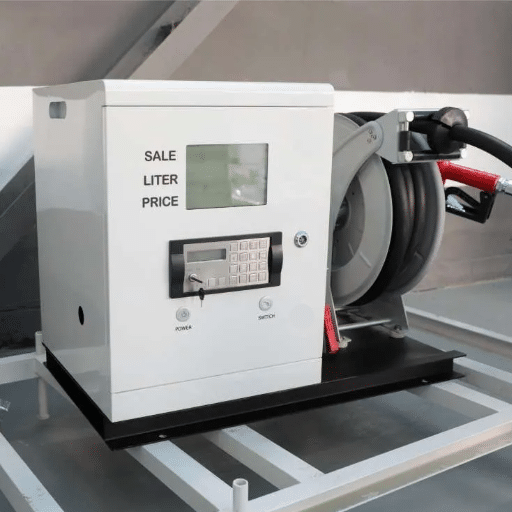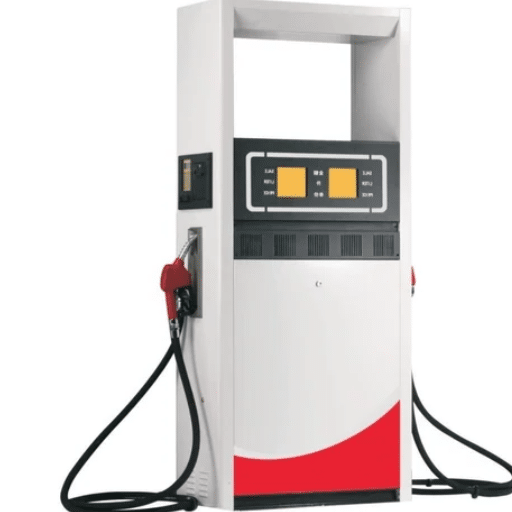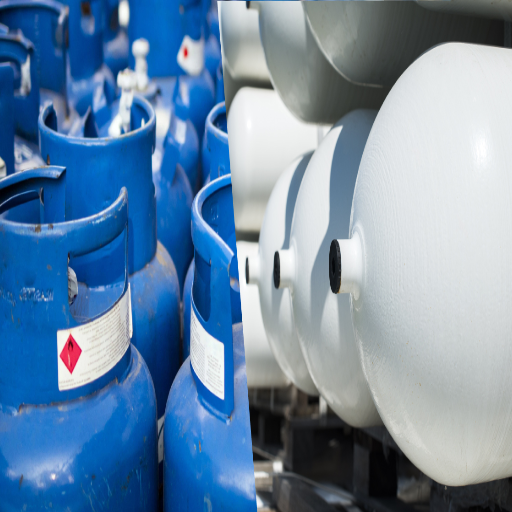The building of a gas station is a complicated project and requires much planning, designing, and execution. If you are thinking about becoming a business proprietor or merely wish to gain knowledge, the timeline of such an important venture is one very key thing to grasp. Each phase, from permitting and site preparation to setting the fuel systems and constructing, adds up to the overall time span for such a big project. This blog will take you through the most important stages of gas station construction, highlighting the timeline factors for each step and what you can expect. So, have you ever wondered just how long it takes to see a barren lot converted into a functioning gas station?
Understanding the Gas Station Construction Process

Building a gas station usually takes about 6-12 months, depending on various key factors that may affect the timing of the entire project. Permitting is a common necessity. Other considerations may be the design complexities, site preparation, weather, and availability of materials and labor. The process starts with approvals and permits, after which the site preparation begins. Site preparation may consist of land clearing, leveling, and drainage configuration. Subsequently, the main construction is carried out: two storage tanks for fuel, pumps, and the convenience store. Fuel systems and safety installations are made final, followed by inspections that render the station ready for operation. When planned and methodically coordinated, timelines can be maintained.
Key Factors Influencing Construction Time
Several factors can drastically affect the timeline for building a fuel station: the prompt acquisition of permits and meeting regulatory requirements. The permits depend on the location, which can entail lengthy reviews. Site conditions also play a major role: for instance, poor soil conditions, difficult terrain, or unusual weather can hamper and delay construction progress. Next comes the availability and coordination among labor and materials; any shortage or logistical issue only compounds construction timelines. If the project can be cleverly managed by identifying potential barriers early and maintaining close communications with contractors and agencies, the process can be expedited, preventing needless delays.
Pre-Construction Requirements
Before the actual construction work could begin, several crucial steps needed to be taken to ensure utmost smoothness during its execution.
Planning and Permits
Prepare a thorough project plan with design specifications, site analysis, and some estimated budget figures. Also, ensure the acquisition of any permits or approval from relevant local authorities, thereby keeping in mind the zoning, environmental, and safety regulations.
Site Preparation
Tests must be conducted for soil concerns related to its bearing capacity or how it can hold well for the whole set of structures. After that, clearance should be done on this site; grading and drainage or irregularities to rectify will begin, so as to ensure that preparation shall serve as the foundation for the project.
Resource Coordination
Contract some trustworthy entities for labor and suppliers. Materials and equipment must be made available at the right time, while ensuring all concerned parties are informed with clear communication to avoid delays.
Risk Mitigation
Identify the possible risks, including weather conditions, labor shortage, or supply interruptions. Then establish contingency arrangements to deal with them efficiently, with the minimum amount of disruption to the scheduling of the project.
Budget and Schedule Management
Prepare a cost that would be genuine and realistic timeline after thinking about all possible expenses and time constraints. Keep track of progress, so everything goes according to schedule, while dealing with any mishaps that may arise along the way.
Considering all these requirements thoroughly makes projects more likely to be delivered successfully, facing fewer delays and unexpected challenges.
Construction Timeline Overview
When a construction schedule is well-made, it becomes the backbone for project success. For a competent schedule, first identify essential project phases-designer, permitting, site prep, construction phase, and final inspection. It then breaks down phases into minute details, with a deadline fixed for each task, as well as responsible parties for accomplishing those tasks. Project management software can be implemented and can aid in coordinating the activities and managing time.
Buffer periods should be allowed for probable delays, such as weather, material availability, or local labor shortages. Constant communication with stakeholders and contractors is vital to resolving unexpected events and keeping the project on its timely course.
More emphasis shall be placed on early approvals such as permits and zoning requirements, to ensure no major bottleneck can develop. Progress against the timeline, if monitored, can help in the early identification of risks to ensure adjustments can be made before it is too late by way of regular updates and site visits. If properly planned and watched over, your construction timeline will be maintained whilst delivering your project end user with high satisfaction.
Permits and Regulations for Opening a Gas Station

Opening a gas station implies securing a kind of permits and may also be subject to many regulations in order to follow legal, safety, and environmental standards. Some of the important requirements include:
- Zoning Permits: Check whether the location complies with state and local zoning and land-use laws.
- Environmental Permits: Acquire permits relating to fuel storage tanks bearing environmental safety standards so that they prevent leaks into the surface and also groundwater.
- Building Permits: Applying for permits regarding erection, alteration, or renovation of any structure will ensure that the gas station complies with laws relating to site layout, structural design, and accessibility.
- Fire Safety Inspection: Make sure the facility complies with the fire safety regulations on the installation of fire suppression systems and the safe handling of fuels.
- Business License: A business license is required before one can conduct a transaction legally within your jurisdiction.
It’s important to make sure you check with local government offices or regulatory agencies for precise requirements, as these may vary from place to place.
Types of Permits Needed
The types of permits required can vary from one town to the next and from industry to industry, but generally include:
- Zoning Permits are necessary to ensure that your intended location for your business is zoned appropriately for your business activities. This includes confirming that the land use complies with local regulations.
- Building Permits are permits given for your construction, renovation, or any structural modifications made to your premises. Approvals pertaining to site layout, site design, and building codes, as local standards, are also considered in this respect.
- Fire and Safety Permits assure that you comply with fire safety regulations, so for fire alarm systems, sprinkler systems, fire extinguishers, and emergency evacuation plans, etc.
- Health Permits are issued by the health department in the case of a food, sanitation, or health-related business to ensure hygiene and public safety standards.
- Environmental Permits: Necessary for businesses with emission, waste production, or environmental impact. These permits cover waste disposal, air quality control, and water use permits.
- Alcohol and Tobacco Licenses: Required if you are engaged in the sale or distribution of alcohol and tobacco products.
Possessing these permits would enable businesses to operate legally and in accordance with certain regulations specific to the industry. Always check with local authorities to ascertain which permits apply to you in your specific situation.
Timeline for Obtaining Permits
The timeline varies with the type of permit, locality, and business necessities. However, the following steps are generally included:
| Phase | Duration | Description |
|---|---|---|
| Research and Preparation | 1-2 Weeks | You will need to start by finding out what permits your business will require based on the location, industry, and operational scope. Gather all documents that may be required, such as a business plan or tax ID, or proof of insurance. |
| Application Submission | 1-2 Weeks | Preparation and submission of all applications to their appropriate agencies: local, state, or federal levels. A few applications may be submitted via online services, thus speeding up the process. |
| Review and Processing | 2-8 Weeks | Once an application is filed, agencies review it and may perform inspections or follow up with requests for additional information. The time required varies widely with the complexity of the permit, time available for the inspector, and numerous other factors. |
| Approval or Follow-Up | Varies | Your permits give you the right to engage in a certain activity at a certain place for a limited period. If your permit is approved, under usual circumstances, it will just be issued to you. But if you need to make any corrections or file appeals, then your stage can drag on. |
While permits for simpler activities can be issued in weeks, an end-to-end processing of licenses for more complex and industry-specific matters, including environmental or alcohol permits, may even last for several months. Always plan and consult with local agencies or legal professionals to expedite the procedure.
Impact of Regulations on Construction Duration
Regulatory affairs clearly impact construction times, more often giving rise to delays in projects while companies try to remain compliant due to various levels of complexity. Zoning ordinances, environmental regulations, and permitting processes could delay the schedules of the projects if not avoided early on. For example, it may take a sufficient amount of time to negotiate strict zoning, as it might require multiple changes to project plans, whereas an environmental assessment could take several months to complete. Building codes and inspections will also add layers of checks that can slow things down when there are issues that need to be resolved, even though these are mostly to ensure safety.
To prolong the delay, it is much better to work with local authorities from the early phases of the planning, and all documents should be correct and complete. In this manner, one can expedite the compliance process along with professional help, such as through consultants or legal advisors conversant with local regulations, thereby avoiding possible errors. While regulations are there to guarantee safety/ecological sustainability, by knowing their potential repercussions and planning accordingly, one can keep a project-building schedule on track.
Startup Costs and Financial Considerations
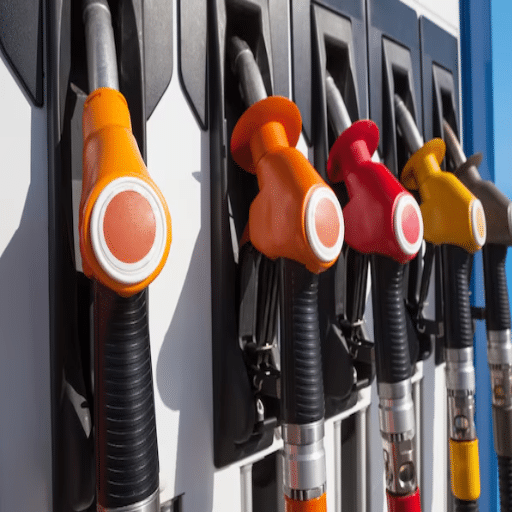
Startup costs and financial planning are very important in the successful implementation of construction projects. Important costs are for land acquisition, design and engineering, permitting and inspection, labor, materials, and equipment. Other costs to be considered are insurance, financing fees, and an amount set aside for contingencies and unexpected expenses. Cost control is created through proper budgeting; funding may be from lending institutions, grant agencies, or private investors. Financial plans must also be reviewed and revised from time to time to keep the project financially viable and on track, not to go over budget.
Estimating Startup Costs
First and foremost, estimating the startup costs involves listing all expenses that are necessary to start the business and keep it running. In general, the expenses are segregated into one-time startup expenses, such as legal fees, permits, equipment, and initial inventory; and continuing operational expenses such as rent, utilities, and payroll. Use any of the available online calculators or templates to help you prepare a very comprehensive list, particular to your industry. Aim to research the average expenses for your business so that you have a realistic benchmark in view of expenses, especially less obvious ones like marketing or professional services. Do factor in some contingency reserves in case the estimated budget misses unexpected expenses. A detailed plan combined with trusted data sources will give you a firm basis to accurately estimate startup costs and assist in getting the required funding.
Funding Options for Starting a Gas Station
Securing funding for starting a gas station typically requires a combination of options to meet the substantial initial costs. Here are some common funding sources to consider:
Small Business Loans
A conventional bank loan or an SBA loan is the most popular type. SBA loans tend to offer lower interest rates and longer repayment terms and, therefore, are a superb choice for new entrepreneurs. When applying, be sure to present solid business plans and all cost estimates.
Franchise Financing
If you intend to purchase a franchised gas station (for example, BP, Shell, or Chevron), then many brands provide some form of financial support or have an established lending program with potentially favorable arrangements for loan terms or to spread out the upfront costs.
Private Investors and Partnerships
Investors and partnerships allow one to share the financial burden of laying down a gas station business. This usually translates into some form of equity or profit-sharing agreement to individuals willing to put funds into your project; hence, clarity on terms is necessary upfront.
Personal Savings or Retirement Accounts
Banking on personal savings or retirement money can be an option, although it places significant risk on the individual. Weigh the long-term repercussions carefully before putting in your personal assets.
Equipment and Real Estate Financing
Targeted financing programs make way for you to cover specific costs such as purchasing gas pumps, leasing land, or building the station. There are lenders specialized in providing these services for gas station start-ups.
By combining more than one funding source, you will ensure safety from risks and the financial backing needed to get the business going and sustain it. Always be thorough in your planning and seek advice from a financial expert at every step to take full advantage of existing opportunities.
Profitability and Return on Investment
Basic things that affect gas station profitability include the location, fuel pricing strategy, ancillary services, and operational efficiency. The more traffic that passes by the station near a highway or downtown area, the more earnings it potentially can make. Although the fuel sales draw traffic, their margins are relatively slim, calling for the convenience store sales, car wash, and other services to generate profits.
Gas stations that are well-run, however, can pay back the capital invested within 2 to 5 years, depending upon the initial setup costs, operational expenses, and income. According to industry reports, profit margins on fuel run from as little as 1 to 5 percent while much higher margins exist for everybody else’s products-such as chips, soda, or car supplies.
To maximize return on investment, reduce operating costs, diversify revenue streams, and utilize loyalty programs or local marketing from another angle. These help in bringing in repeat customers and increasing profit levels, while guaranteeing long-term financial sustainability.
Successful Gas Station Business Strategies
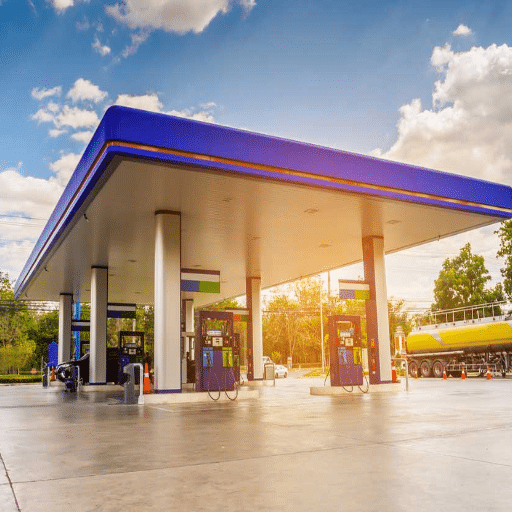
Ensure Convenience
Make sure your gas station is easily accessible and quicker with good service. It could take into consideration many payment types, with drive-thru or just self-service kiosks, for the preference of customers.
Stock Items With High-Margin
Concentrate on selling popular and lucrative items like snacks, cold drinks, and food eaters-on-the-go. An arrangement of goods that is well-stocked and highly organized can help with spontaneous selling.
Initiate a Loyalty Program
Such programs build customer loyalty and therefore encourage repeat purchases. Discounts and free fuel points or even special discounts for members are some ways to reward loyal customers.
Maintain Cleanliness and Safety
Customers’ safety and cleanliness matter to attract more customers. This includes ensuring clean restrooms, good maintenance of fuel pumps, and clean store interior spaces to create a good customer impression.
Make Local Advertising Work for You
Target your advertising towards potential clients or provide public information via flyers, which can sponsor community events, thus allowing the firm to raise awareness about the gas station. Make those in your community part of your family in trust and in mutual benefit through long-term relationships.
Choosing the Right Location
Choosing the ideal location for a gas station is paramount in ensuring profitability and long-term sustainability. Identify a highly trafficked area: highways, bustling intersections, or fast-growing residential neighborhoods are considered mere examples. Analyze the competition: stay away from oversaturated areas in gas stations, yet make sure there is enough demand so your business can survive in that area. Accessibility levels and convenience for customers should also be considered. Places with easy ingress and egress, along with other establishments such as eateries and shopping centers, would draw more foot traffic. Zoning codes and environmental restrictions should also be checked for compliance before settling for a site.
Franchise vs. Independent Gas Station
There are several critical points when finding your way between a franchise and an independent gas station. Brands offer name recognition, established systems, and corporate support to the extent of making entry smoother and appealing to loyal customers. But they usually require high initial investment costs, royalty fees, and minimum flexibility related to operations since franchisees must work within the policies of the franchisor.
Conversely, with an independent station, you take a bigger role in managing your decisions regarding pricing, branding, and offerings of additional products or services. The initial investment could be less, but you must build your name and promote your efforts in the absence of any corporate backup. In simpler terms, it depends on your budget, appetite for risk, and desire for autonomy under guidance. These avenues can land you 50pb inside your pockets if you do all the research and perform well!
Branding and Marketing Strategies
Only a strong presence online can foster good branding and marketing; hence, one of the must-have requirements is an attractive and functioning website. Your website must portray your brand image and personality while simultaneously communicating what you are all about, all wrapped in a package that consists of a sensible user experience. Include familiar branding elements such as logos, color schemes, and tone of voice for augmented recall and trust. The website also needs to factor in mobile users for SEO purposes to help potential customers find it. Such engagement with the audience through blogs, customer testimonials, and beautiful imagery should do wonders for their experience. A Slick and utility-oriented website is more than just a marketing tool; it is often the first time a customer comes in contact with your business, and an integral part of your entire strategy.
Frequently Asked Questions About Building a Gas Station
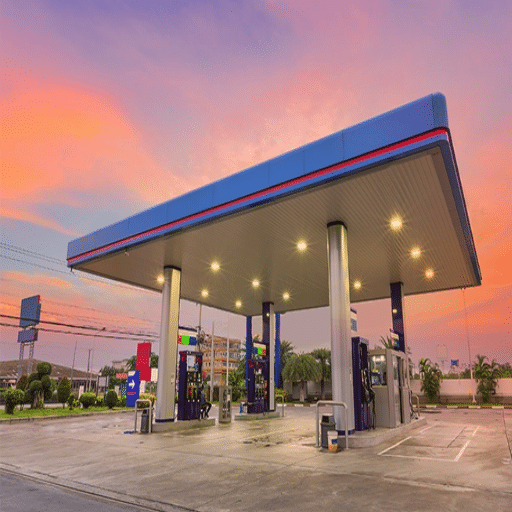
Common Challenges in the Construction Process
There are a few challenges that demand attention while trying to get the project completed:
Environmental Compliance
There are rigorous regulations on fuel storage, soil contamination, and any potential leakages that call for careful planning and upholding of environmental standards. Penalties and delays could possibly be the outcomes in case of any breach.
Zoning and Permitting
Obtaining permits and setting up local zoning restrictions may be time-consuming. The process involves several reviews at the municipal level that can delay the process unless carried out efficiently.
Site Selection and Preparation
The important thing is to find the perfect location with a compromise for accessibility, visibility, and traffic volume. Besides, site preparation involves clearing, grading, and even environmental remediation if needed, which are all time- and cost-intensive.
Budget Management
Unforeseen expenses, increasing material costs, and delays put pressure on the allocated budget. Hence, professional financial planning and a contingency reserve will help keep the project on track.
Logistical Coordination
With the many contractors, suppliers, and deadlines to juggle, this could become quite complex. Miscommunication or conflicts on scheduling may quite well create inefficiencies or even block progress on the project loop.
Competition in the Market
The distance of the location to other gas stations, as well as insight into the competitive landscape, are vital in securing the long-term viability of the business once construction is completed.
How to Accelerate the Construction Timeline
Planning and coordination from the onset is done to accelerate the construction schedule. Selecting good contractors and ensuring they get materials on time is paramount. Problems are foreseen and handled well before they present themselves. Clear communication among all interested parties is my priority, while project management tools serve to track progress, avoid delay, and smooth out the workflow. Through risk anticipation and flexibility, time ahead is maintained with quality intact.
Long-Term Considerations After Opening
They got their facility, now they need maintenance and attention. Maintenance is important for keeping equipment and infrastructure at an optimal level to extend their lifespan and to avoid unexpected expenses. On the other hand, setting up a system for preventive maintenance and budgeting for minor repairs will save a lot of money over time.
Customer feedback should also be monitored while services are adjusted to correspond to ever-changing needs, thus ensuring the retention of clientele and the dedication of customers. Customer satisfaction surveys and social media engagement can bring excellent insight into potential improvement.
Then comes investment in staff development. Through continued training and opportunities to enhance their skills, employees can provide higher quality services and maintain morale better. With these measures taken, businesses will always stay competitive, adaptable, and ready for success.
Key Takeaways
- Building a gas station typically takes 6-12 months from start to finish
- Total startup costs range from $1 million to $5 million depending on location and amenities
- Proper permitting and regulatory compliance are crucial to avoid delays
- Location selection is paramount for long-term profitability
- Diversifying revenue streams beyond fuel sales improves profit margins
- Regular maintenance and customer service excellence ensure sustained success
Reference Sources
1. Optimizing Number and Locations of Alternative-Fuel Stations Using a Multi-Criteria Approach
Frequently Asked Questions (FAQs)
What are the key factors affecting the construction timeline for a gas station?
The construction timeline can be influenced by many factors. Some factors include highway location, complexity of construction, local laws, and project manager expertise. Other possibilities include environmental clearances, community consultations, and the like. All the above factors may extend the timeline.
What are the requirements and timelines to start a gas station?
Starting a gas station requires planning and an understanding of various requirements, such as getting permits, complying with safety regulations, and negotiating fuel contracts. This initial process sometimes varies in its timeline, but it is really crucial to have clear expectations and open communication with local authorities to prevent expensive delays.
What are the advantages and disadvantages of owning a gas station?
Owning a gas station could have various advantages, such as its long-term survival and profitability. However, it has its disadvantages: high initial investment, operating expenses, and franchise fees, if you opt to work under a brand like Shell. A prospective pawn needs to understand these.
What are all the stages involved in the construction process of a gas station?
Gas stations undergo a multi-stage process of construction, which begins with choosing a site, market research, crunching the finances, obtaining the necessary permits, and the actual construction. An effective project management has to be employed during each phase to see that the work keeps to the stipulated time and cost, translating into the delivery of a successful gas station.
How do I keep a building project on schedule?
It is probably best to have an experienced professional complete the project management for you when it comes to respecting the schedule. Being clear with regard to project outcomes, practicing transparency in communication with every stakeholder, and even forecasting the potential for some compromise could work wonders for having a smooth construction process.
What considerations should I make when selecting the site for a service station?
Factors like high traffic, proximity to highways, competition, etc., should be considered while choosing a location for a service station. Market research would give you an idea about the demand area and the profitability of your gas station business.
What startup costs are involved in building a gas station?
Building a gas station startup costs can be quite significant and may include land, construction, equipment, and inventory. Gas station owners also have to factor in franchise fees if they enter into an agreement with one of the major fuel brands. It is important to know these costs beforehand, as it will help in financial planning.

